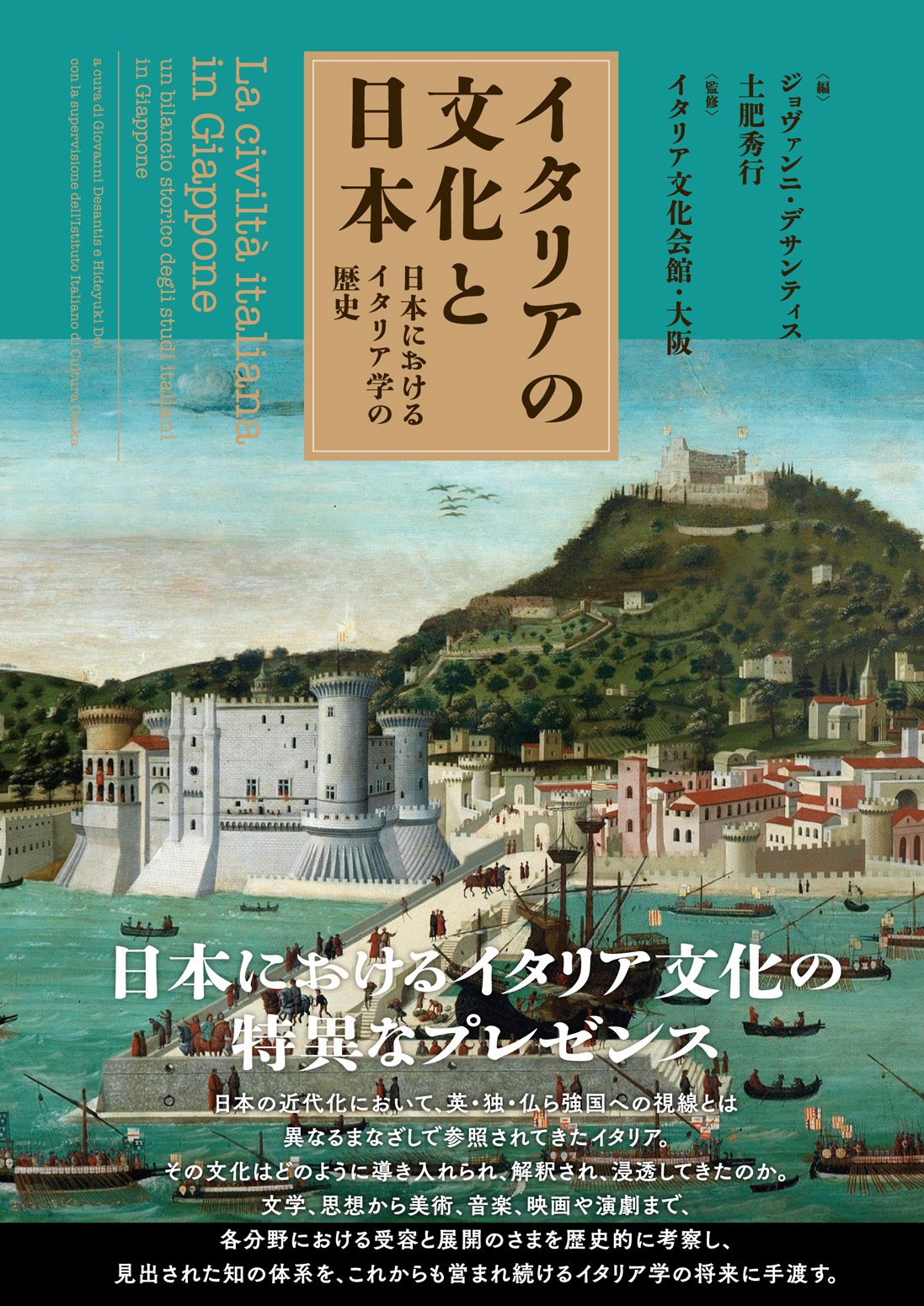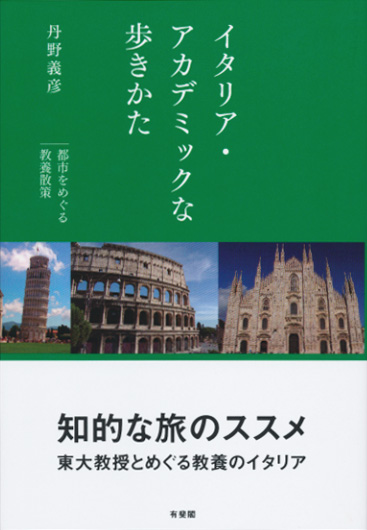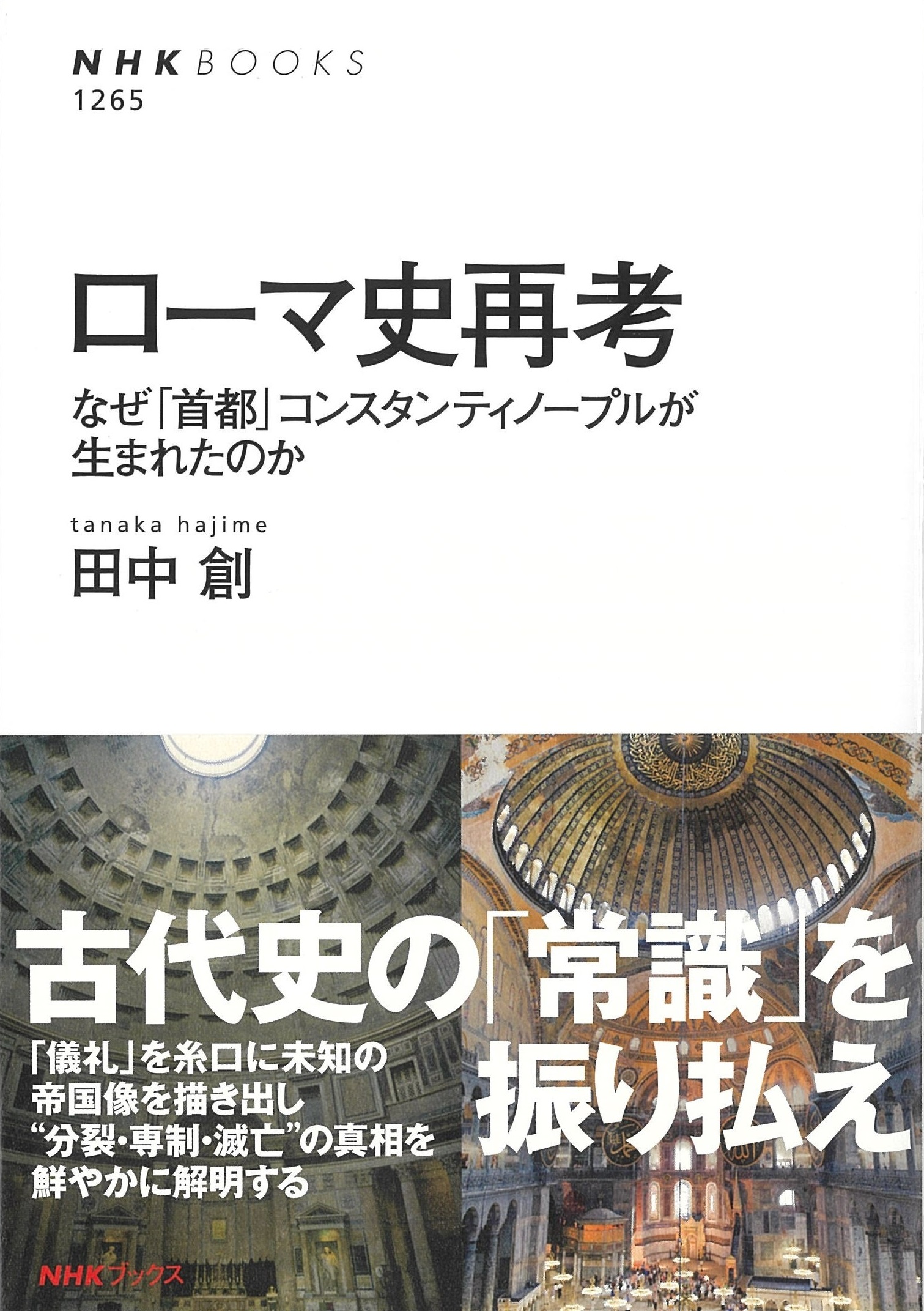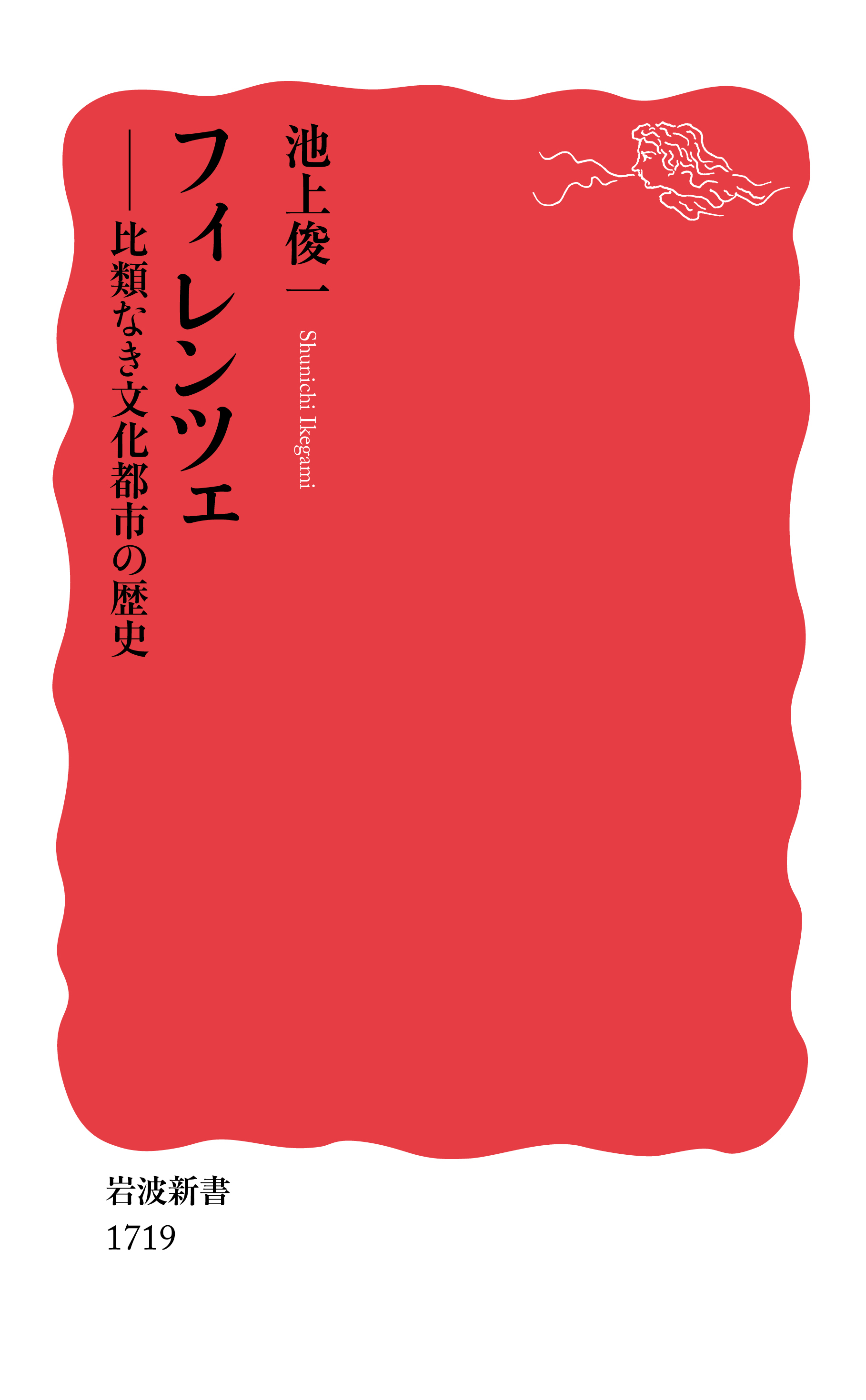
Title
Italia no Bunka to Nihon (Italian Culture and Japan - History of Italian Studies in Japan)
Size
344 pages, A5 format, hardcover
Language
Japanese
Released
February 28, 2023
ISBN
978-4-87984-436-1
Published by
Shorai-sha
Book Info
See Book Availability at Library
Japanese Page
"Italian Culture and Japan" is a book written by a group of researchers in Italian literature, philosophy, theater, film, and music. It examines the introduction and study of Italian culture in Japan up to the present day. This is the first cohesive description of the history of acceptance of Italian culture. It is also an attempt to examine the intellectual heritage of Italian studies that have been accumulated in Japan over many years and to pass such heritage on to future generations.
This book, however, is not merely about the history of acceptance. The beauty of ‘Italian Culture and Japan’ is that it explores the past history of how Italian culture was received in Japan, and projects future research directions. As each chapter shows, most authors focus on introducing Italian culture as per the theme they have taken up. The chapters describe how it has been introduced and received in Japan, while carefully outlining topics that may be interesting for those who are planning to do research (or write a thesis). The book itself is an excellent book guide for learning about the Italian culture, with a good bibliography in each chapter. I recommend it as a first read for anyone with even a passing interest in Italian culture.
I was in charge of writing the section on “Acceptance of women writers,” a somewhat unusual theme in this book, which is divided into chapters by field and era. Yet, in a country like Japan, where discrimination against women is still prevalent, there is a great need to illuminate women’s achievements by writing about those who have taken the road less travelled and obtained remarkably positive results. First, I decided to write about Atsuko Suga (1929-1998), who made significant contributions to the introduction of the Italian literature in the 20th century. Atsuko Suga was well-known as an essayist and writer. However, although she lived in Italy for a long time and was an excellent scholar of the Italian literature, there has not been much mentioned of the influence of the Italian literature on her work. Therefore, I have taken up the works of Natalia Ginzburg (1916-1991), an Italian woman writer who had a particular influence on Suga Atsuko, and analyzed the relationship between her works and Suga's.
I also introduce various other female writers active in the late 20th and 21st centuries. Furthermore, as I went to the library of the Italian Cultural Institute in Tokyo to read translations of works of Italian women writers, I gradually became aware of the various ways in which Italian and Japanese women in different positions—writers, editors, translators, researchers, and cultural operators at the embassy—were connected and collaborating. I have tried to save and record the micro-history of the events behind the acceptance of female writers.
In Japan, there are not many universities specializing in the study of Italian culture, with the University of Tokyo being one of the rare exceptions. If this book has sparked your interest in Italy, I encourage you to explore this subject further. You can study Italian culture extensively at the University of Tokyo, so I urge you consider enrolling in the Faculty of Liberal Arts or Faculty of Letters to delve deeper into Italy, the source of European culture.
(Written by YAMASAKI Aya, Associate Professor, Graduate School of Arts and Sciences / 2023)



 Find a book
Find a book




